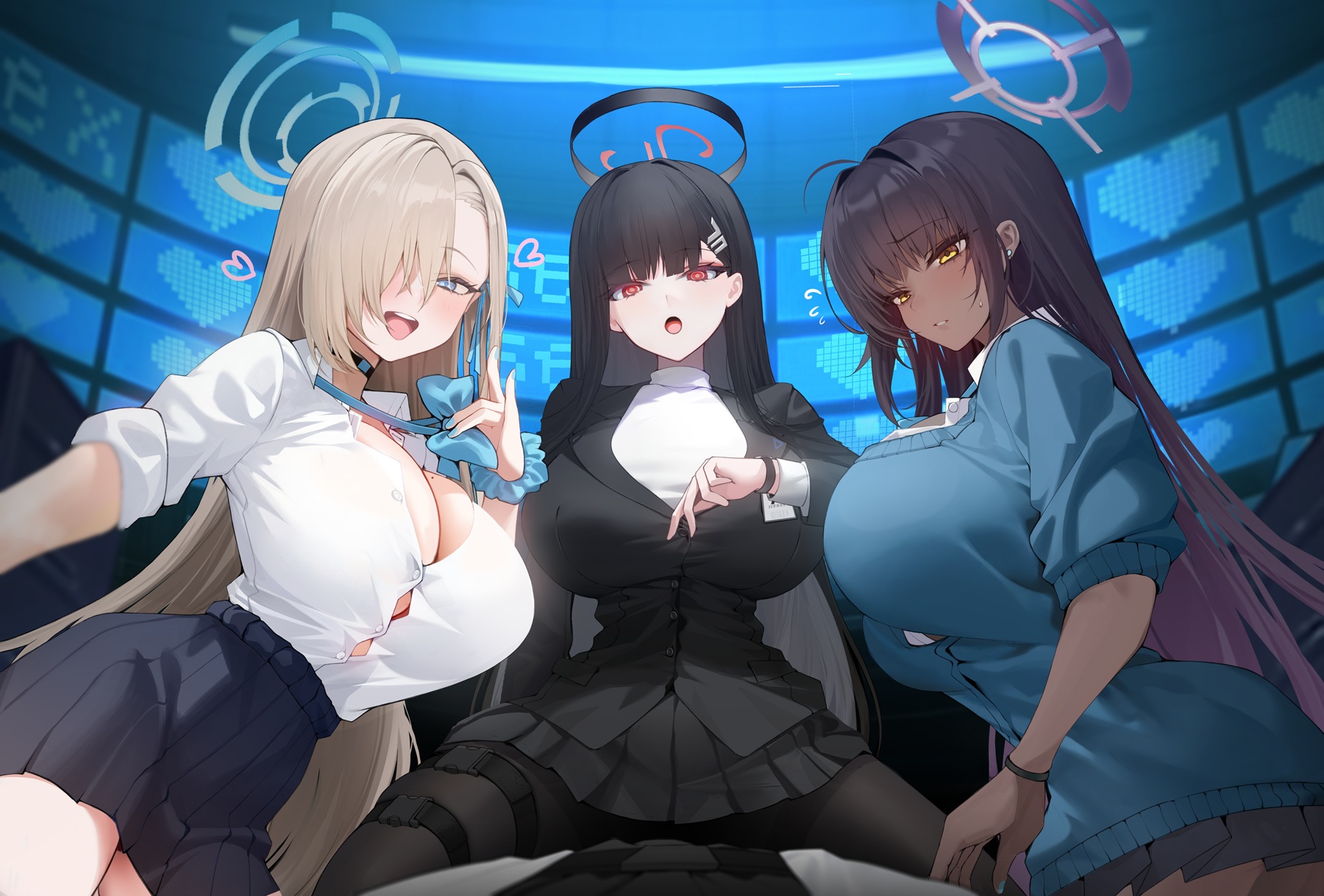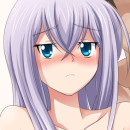/haruhi s2 - the title main female protagonist.jpg)
The main title female protagonist.
After sitting on this release for far longer than I did with the first installment (two years at the minimum I think), I finally gets around to watch it so that I can clear my huge backlog. As shown in the title, this supposedly second season of the Haruhi Suzumiya was aired in 2009, therefore it will try to unseat the current ‘Anime of the Year 2009’ holder, Zan Sayonara Zetsubou Sensei. But to do so, this second season of Haruhi Suzumiya series has to be considerably better than the first one. You will know whether this anime managed to do that below.
/haruhi s2 - a very apt description for her.jpg)
An apt description for her.
Story:-
My synopsis of the first season:-
Our protagonist Kyon, an ordinary high-school student who wished for a normal school life, faces the terror of his life as he was dragged into the life of the school queer Haruhi Suzumiya and become the co-founder of the SOS Brigade, a club that aims to investigate anything mysterious (to Suzumiya’s standard). The club then was joined by a bumbling time-traveller, a devious esper and a silent alien (muahahaha what is this) whose carry the same mission of observing Suzumiya for their own reasons.
This synopsis I used for my review of the first season still applies, mainly because this ‘second season’ actually consists of the first season’s materials, with some of them rewritten, and some new episodes tacked into it. As a recap, the first season, when watched in chronological sequence, is made up from two parts (first part: first 6 episodes, second part: the latter 8 episodes). The first half is where the main plot is, and the second half is the period where the first season started going into slice-of-life+comedy mode. All of the ‘second season’ materials are inserted in the second part. The apostrophe means that the inserted materials definitely cannot stand up on its own, which explained the unconventional format this 2009 version of The Melancholy of Haruhi Suzumiya has adopted. This unconventional format also means that the airing sequence seen in the first season is truly unnecessary in the first place.
As for the materials of the second season, it has two arcs; the first one is the time-loop arc Endless Eight, and another arc shows the filming scenarios for the best episode in the first season. Then there is a single episode where the main protagonist time-traveled 3 years into the past so that he can met with the bratty main title female protagonist of that time. And damning for the second season of this series, that single episode about time-travel is the best episode that the second season has, followed by the filming scenes, and then Endless Eight. The Endless Eight arc has so many fundamental problems that really threatened to bring down this series as a whole, in addition of the technical difficulties this series has because of its unconventional format, so I will focus on the other two first.
The single episode where the main male protagonist time-traveled to the past is actually really good, mainly because it helps props up the first part of the first season (you know, the one where the plot is). In fact, plot-wise, this episode can be very important if a third season or more comes on later, and may improve the distinctly ordinary main story this series has for the time being. The filming arc gives more meat to the best episode of the first season, so I guess there should be nothing wrong too much in it. Plus, there is a certain scene in it that helps the time-travel episode at propping up the main story. There is a minor weakness in that filming arc that I will address later.
One of my complaints about the Endless Eight time-loop arc is the length; at 8 episodes, it is simply too long. This anime can definitely get away with this if each loop are considerably different, but no, that’s isn’t the case here. Of course I don’t expect this anime to copy the Higurashi series, where each of its 9 loops are unique, but the redundancy of events in this particular arc is simply overwhelmingly bad. The director tried to mitigate this by skipping some of the events like the yukata-buying scene in some of the episodes (it doesn’t mean that they didn’t happen, they just happen off-screen), but personally I think explicit event omissions would have been better. For example, this arc would have fared better if one of the episodes explicitly omits the goldfish spooning event. Or maybe having the whole cast doing the ‘part-time job’ event manning the registers instead of distributing balloons. In its current state, if you ever want to watch this anime in the future, only watch the first three episodes of this arc, skip the next four episodes and then watch the last one.
But the biggest problem posed by the Endless Eight arc against the anime’s overall quality is the inconsistent characterization of the main male protagonist in that particular arc, compared to what you can see in the first season’s contents and also in the rest of the second season’s materials. The Endless Eight arc is sandwiched by the Kindaichi-like island homicide arc (material from first season) and the aforementioned filming arc. While the characterization of the main male protagonist in the homicide arc and also the filming arc is consistent and constant, his character in the whole eight episodes of Endless Eight is different, especially in the last scene in every episode of that arc. The main male protagonist in this arc is simply less decisive and less forceful than the main male protagonist in the homicide arc for example. I think if the main male protagonist in this arc is the same as the one in the homicide arc, Yuki Nagato will only have to get through 10 loops instead of ~15000 loops.
/haruhi s2 - the main male protagonist.jpg)
The main male protagonist, who is also the best character of this series.
Due to the unconventional format this anime has, character developments is severely restricted in the context of the first season. Therefore almost all characters in the second season are the same as they are in the first one. The main title female protagonist is a very good example of this; she is completely the same person in both first and the second season’s plots. The main male protagonist (who is also the best character in the whole series) would have been the same, except for his inconsistent characterization in Endless Eight. Therefore here I want to point out the only positive aspect of Endless Eight, and that would be the much-needed character development for Yuki Nagato, the only character that has one written in the second season’s materials. And her character development are done without causing her character to be out of line with what has already been shown in the first season materials that comes after Endless Eight. She is pretty much static in the first season show, but not so in this 2009 show mainly because of this.
Because I watched this anime in chronological sequence, like I do 5 years ago with the first season, there are no problems with the flow of the storyline. I wonder why the first season do that idiotic airing sequence in the first place; it only destroy the flow the way I have seen in Rental Magica, a show where I have the misfortune of watching it using the jumbled airing sequence. The pacing in the first 6 episodes are fast, but when the main story ended and the anime switched into comedy+slice-of-life mode, the pacing recedes. The ending in the 2009 and 2006 shows are exactly the same, you know, the open-ended one. This series has a movie, which I will not watch anytime soon.
/haruhi s2 - scenes like this are much better than the main storyline itself.jpg)
Scenes in the comedy+slice-of-life parts of this anime like the one above are usually better than the ones in the first 6 episodes of the series.
Character Design:-
My comment from the same section in the 2006 version review still applies.
Voice Acting:-
My comment from the same section in the 2006 version review still applies.
Music:-
The OST is still the same average gig one you can hear in the first season. The first season material retains its crappy OP theme and the more than decent ED theme. As for the OP/ED themes in the second season materials, the OP theme in good but not so for the ED theme.
Animation/Direction:-
The animation quality in this anime is good, but I can’t help but noticed that the animation for second season materials are better than the ones for first season. The CGI problems (more have to do with integration) has gone away though. Overall choreography for action scenes in the story part of this anime is unchanged in quality. The director’s decision to do away with the jumbled airing sequence is welcomed, and I hope they will never come back.
Conclusion:-
6 out of 10. One less point than what the first season has achieved, mainly because of Endless Eight. Oh BTW, I have chosen to wait for the Blu-ray version of Steins;Gate instead of watching the TV version just like I will do with Mirai Nikki. This is because I have heard that the Blu-ray version will have extra materials in it that you will not see in the TV version. I have still not decided on what to watch next though.
/haruhi s2 - one thing that can be said, the first season bluray upscales really sucks just like kyoani luckystar BDs are.jpg)
The Blu-ray upscales of the first season materials is truly atrocious. Between this anime, AIR and Lucky Star BD releases, Kyoto Animation makes JC Staff looks good.
Shortlink: http://wp.me/prgSo-zt






















